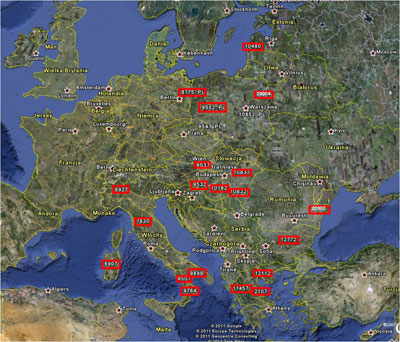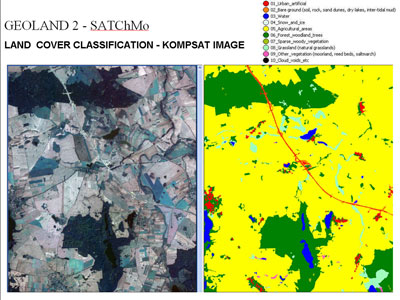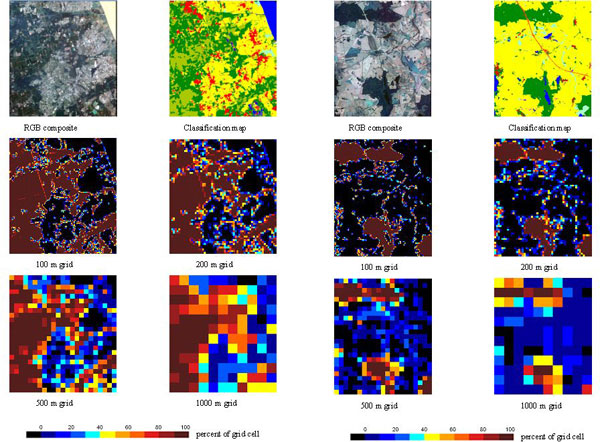SATCHMO CMS
SATCHMO AFS Europe (Seasonal and Annual Change Monitoring Core Mapping Service)
 The aim of SATChMo AFS Europe Project is to prepare semi-automatic method for land cover mapping with the use of Very High Resolution (VHR) satellite images and to produce land cover maps for the selected, representative regions of Europe. The second goal is to create method for detecting land cover changes, based on analysis of multi-temporal VHR satellite images.
The aim of SATChMo AFS Europe Project is to prepare semi-automatic method for land cover mapping with the use of Very High Resolution (VHR) satellite images and to produce land cover maps for the selected, representative regions of Europe. The second goal is to create method for detecting land cover changes, based on analysis of multi-temporal VHR satellite images.
In the course of the project representative areas were selected statistically, using Area Frame Sampling (AFS) method. Institute of Geodesy and Cartography – Remote Sensing Centre has carried out research works, which finally resulted in preparation of algorithm for land cover classification based on VHR satellite images in eCognition environment. Classification method is based on using spectral and textural features for determining main land cover categories (10 classes) “Architect” interface was used for algorithm implementation; it enables to pass classification process in a friendly way. The manual for utilizing classification algorithm has been prepared. Applying the prepared algorithm classification of Kompsat and Formosat images for the selected 20 regions in Europe has been done at the Remote Sensing Centre.
The second task within SATChMo AFS Europe was concentrated on preparation of the method for detecting changes in land cover. Algorithm for change detection has been created within eCognition environment and implemented for producing land cover change maps at ten selected regions of Europe.· The manual for utilizing· change detection algorithm has been prepared.
Within the SATCHMo project the following topic was realized “Indicators of environmental diversity derived from generic land cover products based on VHR satellite images”.
As the environment is very complex and highly dynamic, indicators provide a more appropriate way to track its state than if it were attempted to record every possible variable in the environment individually. Spatial indicators, or landscape metrics, provide a means of characterising a region by summarising the location and distribution of features in the landscape. Landscape metrics can play an important role in the investigation, evaluation and monitoring of landscape structure, which has known linkages to biodiversity. For instance, fragmentation of natural habitat features is detrimental to biodiversity and can be assessed by indicators which summarise the distribution and patch size of key habitats. Changes in indicators over time can capture import environmental trends or the response of the landscape to changing environmental policy. Indicators have a range of uses from measures of biodiversity to estimates of risk.
Following indicators were calculated:
- metrics of landscape fragmentation: Patch Density, Edge Density
- metrics of differentiation of land cover types: Patch Richness, Simpson Diversity Index
- metrics of contribution of natural and semi-natural classes: Natural Patch Richness, Percent of Natura Landscape, Mean Natura Patch Area
- lanscape indicators to change monitoring-SEBI (Streamlining European Biodiversity Indicators): SEBI 4, SEBI 13
The works have been conducted on two test areas located in sounthwestern France (more heterogeneous) and northwestern Poland. The analysis was done for 4 dimensions of grid: 100, 200, 500 and 1000 m.


